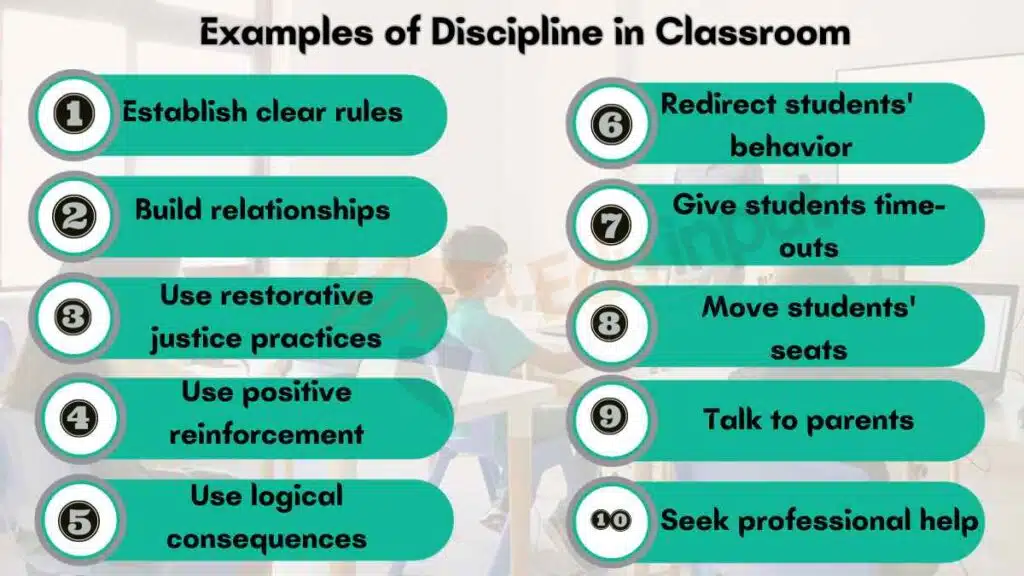10 Examples of Discipline in Classroom
Discipline in classroom is an essential part. It helps to create a safe and supportive learning environment where all students can thrive.
When students are disciplined in a positive and effective way, they learn to respect themselves and others, and they develop the skills they need to be successful in school and in life.
Here are 10 examples of discipline in classroom.

Examples of Discipline in Classroom
1: Establish clear rules and expectations
Students need to know what is expected of them in the classroom. Teachers should establish clear rules and expectations at the beginning of the school year and review them regularly.
Rules should be fair and reasonable, and they should be enforced consistently.
2: Build relationships with students
Teachers who have positive relationships with their students are more likely to be able to effectively discipline them.
Teachers should take the time to get to know their students individually and build trust with them.
3: Use positive reinforcement
Positive reinforcement is a powerful way to encourage good behavior. Teachers should praise students for following the rules and for making good choices.
They can also use rewards, such as stickers, privileges, or certificates, to reinforce positive behavior.
4: Use logical consequences
Logical consequences are natural consequences of misbehavior. For example, if a student forgets to bring their homework to class, they may have to complete it at recess or after school.
Logical consequences should be fair and reasonable, and they should be explained to students in advance.
5: Use restorative justice practices
Restorative justice is a way of addressing misbehavior that focuses on repairing the harm that has been done.
When a student misbehaves, teachers can use restorative justice practices to help the student understand the impact of their actions and to make amends.
6: Redirect student’s behavior
Redirection is a way of getting a student to focus on a more appropriate behavior.
For example, if a student is talking out of turn, a teacher could redirect their attention to the task at hand.
7: Give students time-outs
Time-outs can be used to help students calm down and regain control of their behavior.
When a student misbehaves, a teacher could give them a time-out in a quiet place, such as the classroom library or the counselor’s office.
8: Move students seats
Sometimes, moving a student’s seat can help to reduce disruptive behavior. If a student is easily distracted, a teacher could move them to a seat at the front of the classroom or away from their friends.
9: Talk to parents
If a student is experiencing chronic discipline problems, it is important to talk to their parents.
Teachers can work with parents to develop a plan to address the student’s behavior at home and at school.
10: Seek professional help
If a teacher is struggling to discipline a student, they should seek professional help from a counselor or administrator.
A professional can help the teacher to develop a plan to address the student’s individual needs.
It is important to note that there is no one-size-fits-all approach to discipline. The best approach will vary depending on the individual student and the situation.
Teachers should use a variety of disciplinary strategies and be flexible in their approach.
By following these tips, teachers can create a classroom environment where all students can learn and grow.



Leave a Reply